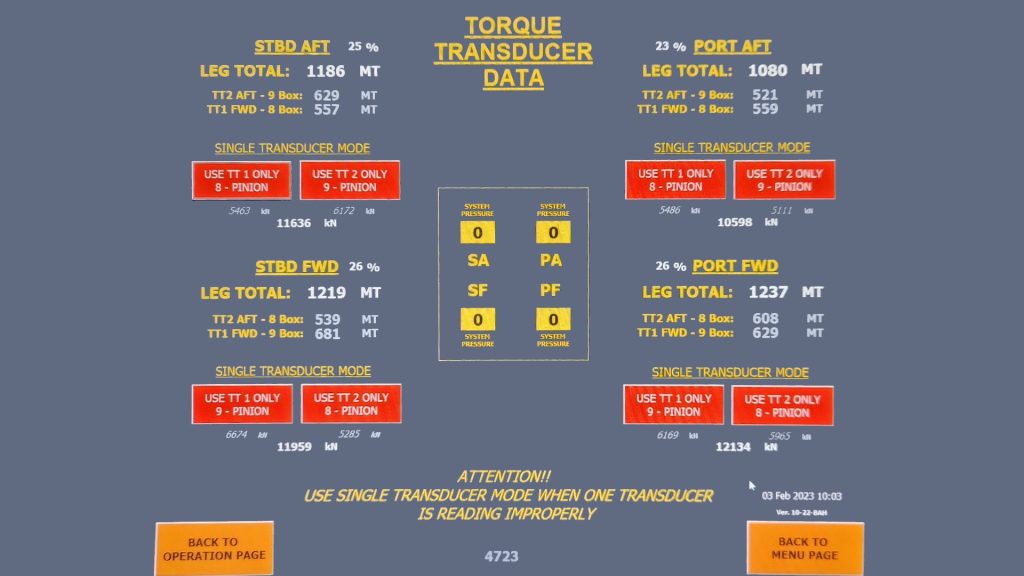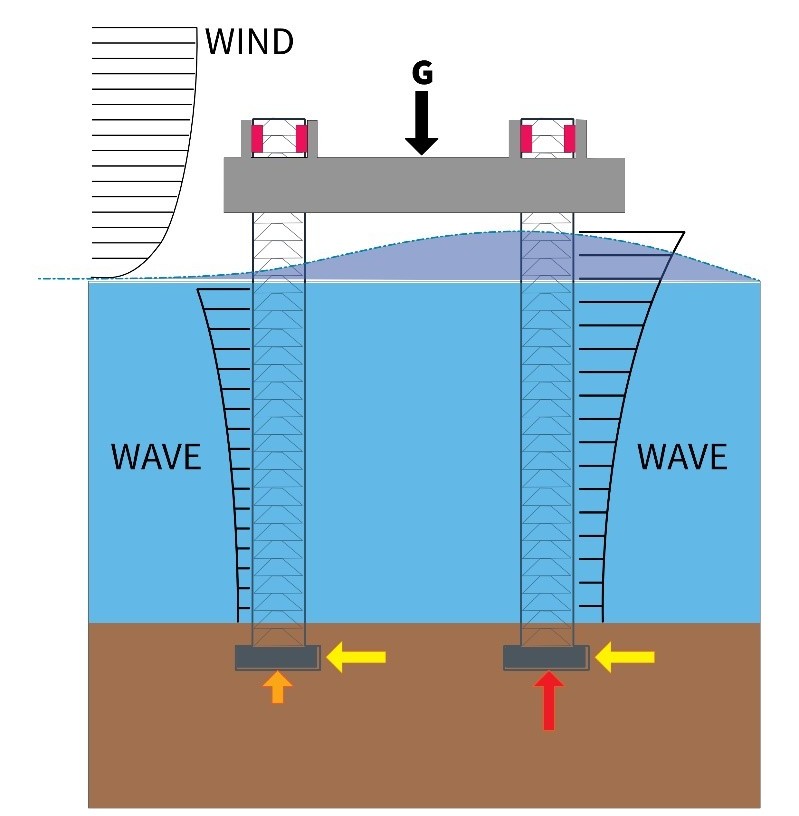When a jack-up vessel is elevated, it is subjected to various adverse forces that need to be considered. The legs of the jack-up barge play a crucial role in resisting these forces and ensuring the stability.

Wind and sea:
When the barge is elevated, it is exposed to the forces of wind and sea. The legs are designed to resist these forces and prevent the elevated hull from swaying. Lateral stiffness is a key characteristic of the legs that enables them to resist horizontal forces and maintain the stability.
However, as the legs are extended downwards, the lateral stiffness decreases. This means that as the hull is raised higher, the legs become less stiff, which can result in more swaying of the hull. Design considerations are made to ensure that the legs have sufficient lateral stiffness to withstand the expected wind and sea forces at different elevations.
Weight:
Another important factor to consider is the vertical force exerted by the weight of the hull. The legs need to have adequate flexural stiffness or resistance to bending to withstand the weight of the hull without bending or deforming. If a leg were to bend while the hull is elevated, it could lead to significant issues for the operator.
To prevent such issues, the legs are engineered to have the necessary flexural stiffness to support the weight of the hull. This involves careful design and selection of materials to ensure the structural integrity of the legs under the vertical forces.

Shock loads:
When barge is pinning down on location the mass of the vessel pressing down onto the seabed may cause an abrupt weight transfer from buoyancy to the leg. This weight transfer is actually an impact on the legs.
Design considerations are made to account for these impact loads and the legs are designed to be rigid enough to handle it.
However, the operator should attempt to minimize the stress by considering the weather and heave of the vessel, since the heave may cause the impact of the spudcans to the seabed, especially when hard soil is engaged.
Additionally, the operator should not use the legs as brakes when positioning the barge near the desired location, and drag them around through the soil while simultaneously using the engines to move ahead. This can cause additional stress on the legs and lead to damage or spudcan failure.
